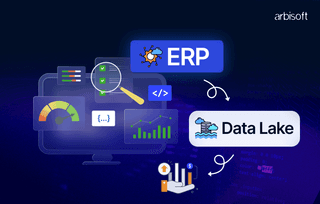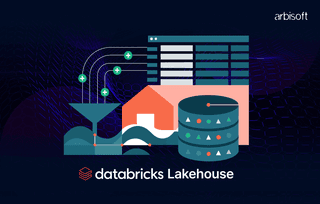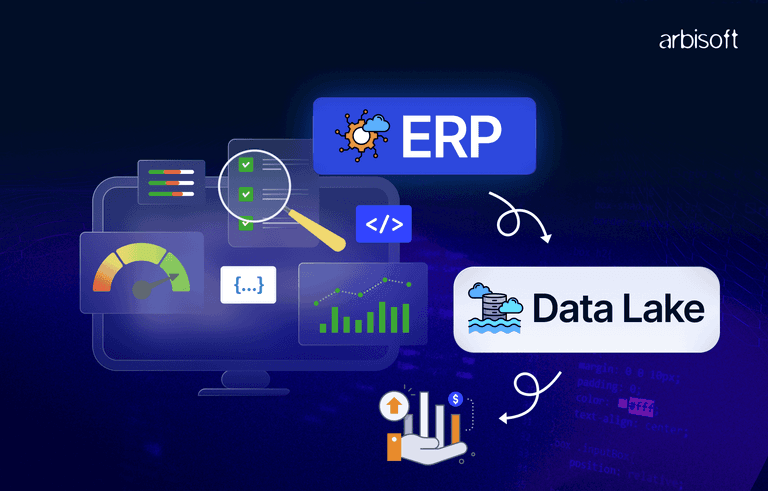We put excellence, value and quality above all - and it shows




A Technology Partnership That Goes Beyond Code

“Arbisoft has been my most trusted technology partner for now over 15 years. Arbisoft has very unique methods of recruiting and training, and the results demonstrate that. They have great teams, great positive attitudes and great communication.”
How Close Are We To Artificial Superintelligence?

After OpenAI's newest model o3 has passed the ARC-AGI test by purportedly outperforming most humans, they have now focused their eyes on superintelligence. With the groundbreaking score of 87.5% on the ARC-AGI benchmark it shows the ability to solve entirely novel problems without relying on pre-trained knowledge.
OpenAI’s CEA, Sam Altman, recently announced that the coming year will be focused on developing “superintelligence.” We have together witnessed AI progressing from basic algorithms with preset rules to advanced artificial intelligence solutions that have the ability to mimic the human cognitive process to solve problems and make decisions.
Altman added, “We love our current products, but we are here for the glorious future,” Altman wrote in the post. “Superintelligent tools could massively accelerate scientific discovery and innovation well beyond what we are capable of doing on our own, and in turn massively increase abundance and prosperity.”
If you want to know more about AGI and the different branches of AI, these might interest you:
- AGI Explained: The Future of Artificial Intelligence
- Understanding the Levels of AI: Comparing ANI, AGI, and ASI
What is Artificial Superintelligence (ASI)?
Artificial Superintelligence (ASI) is often portrayed as the ultimate goal in AI research—a state where machines surpass human intelligence across every conceivable domain; breakthroughs in AI are accelerating progress towards this vision. With OpenAI’s current advancements, the question arises: Is superintelligence truly achievable? And if so, what might it look like in 2025?
Challenges in Achieving Superintelligence
The ARC-AGI test results are amazing, but making a superintelligence isn't just about getting better scores or coming up with new problems. There is still a lot of work to be done before it can handle many big problems.
1. Computational Limitations
Superintelligence demands computational resources that far exceed what is currently available. Building systems capable of human-level reasoning and beyond would require exponential improvements in hardware, energy efficiency, and scalability.
2. Understanding Consciousness
Unlike humans, AI does not have consciousness. It processes patterns but does not "comprehend" them in a human sense. For machines to reach superintelligence, they need to understand abstract thinking, creativity, and emotional intelligence.
3. Alignment and Ethics Issues
One of the hardest problems to solve is getting superintelligence to work with human standards. Misaligned objectives could lead to unintended consequences. Even advanced models today occasionally produce biased or unsafe outputs.
4. Economic and Social Barriers
Scaling such technologies requires societal trust with technical breakthroughs. Global cooperation is essential to regulate and control ASI development, especially to prevent misuse in areas like military or surveillance applications.
What Could We See in 2025?
In 2025, we are unlikely to witness the full realization of superintelligence, but there are practical milestones that could bring us closer.
1. Enhanced AGI Models
AGI systems that can do a bigger range of jobs with little help from humans may be seen. These systems might contribute significantly to fields like healthcare, renewable energy, and quantum computing, while also enabling enhanced decision-making with business intelligence solutions.
2. Targeted Problem-Solving
Organizations might develop AI solutions designed to tackle niche, high-impact challenges—like eradicating rare diseases or optimizing global supply chains.
3. Ethical Frameworks
Governments and institutions might create global rules for AI. These rules would focus on safety, fairness, and transparency. They would help prepare for superintelligent systems.
The Limitations
Superintelligence sounds exciting, but it comes with big challenges. Here are a few.
1. Human Intelligence is Complex
Human intelligence is more than solving problems. It includes emotions, intuition, and experiences. Machines will never completely understand these. but do you think ASI will outrule it?
2. The "Black Box" Problem
That advanced AI really does work in ways that we can’t truly explain. It is easy to distrust them because of their lack of transparency. So if we can’t understand how AI gets to its conclusions, we can’t hold AI accountable to human values.
3. Data Limitations
AI relies on data to learn, but data is not perfect. It can be biased or incomplete. This reduces AI's ability to make decisions. Machines are not capable of sensing the immensity of human experience in data.
4. Risk of Over-Reliance
AI only follows the rules we set for it. However, it is extremely difficult to ensure that it is at all times aligned with human ethics. Even a slight error in its programming may result in major issues.
Conclusion
Although the journey is full of challenges — from computational to ethical glitches—there are also opportunities for us to make significant changes in our lives. The year 2025 is still too early for the appearance of true superintelligence, but the groundwork that we do today is what will pave the way for the coming tomorrow's wonders.
The road before us is uncertain but also thrilling. While we look at the start of this new way, we can clearly see one thing - the possibilities are as limitless as our ambition.
























